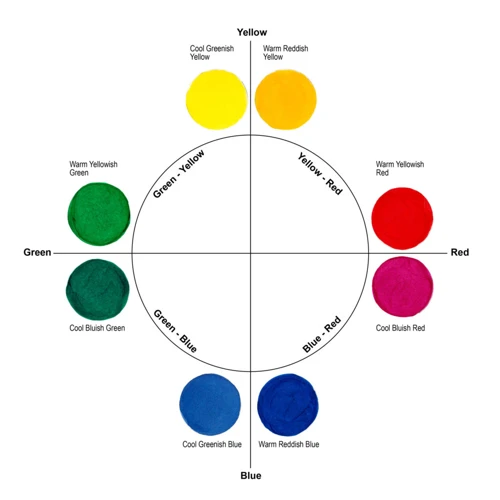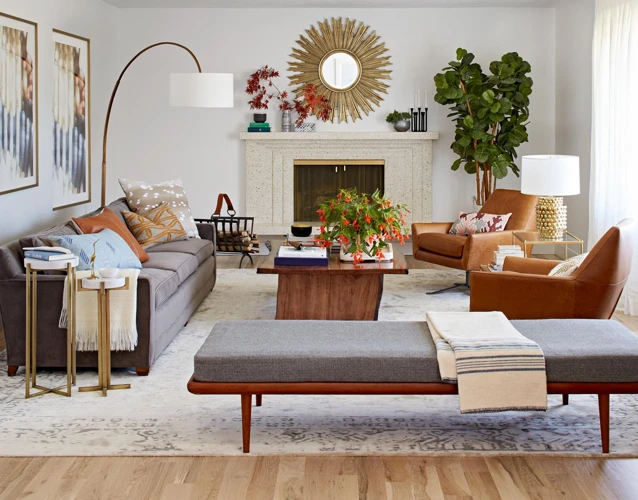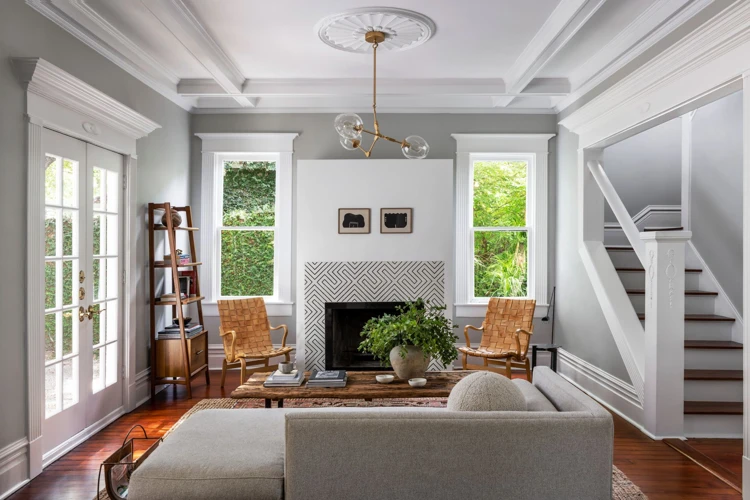Color has the power to transform a space, influencing mood and setting a tone. When considering a palette for a room, it’s essential to comprehend the difference between warm vs cool colors and how they contribute to a home’s atmosphere.
Defining Warm Paint Colors
Warm paint colors are hues that evoke a sense of coziness and comfort. These encompass rich reds, sunny yellows, and vibrant oranges. These colors are reminiscent of natural elements like fire and sunlight, thereby creating an inviting and stimulating environment. Often used in communal spaces, warm paint colors tend to bring an energetic and sociable vibe.
Defining Cool Paint Colors
In contrast, cool paint colors are often associated with calmness and serenity. Blues, greens, and purples fall into this category, reflecting the colors of the sea, sky, and foliage. They are known to have a soothing effect and are ideal for creating a tranquil and restful space.
The Science of Color Temperature in Design
Color temperature in design is a concept that goes beyond aesthetics. It’s a scientific approach that describes how colors can influence perception and behavior. Colors with longer wavelengths, such as reds and yellows, are perceived as warmer, while those with shorter wavelengths, like blues and greens, are seen as cooler. This understanding is pivotal in crafting environments that align with the desired emotional response.
Neutral Paint Tones and Home Atmosphere
Neutral paint tones are versatile and timeless, providing a perfect backdrop for various design styles while also impacting the home atmosphere.
How Neutral Paint Tones Influence Home Atmosphere
- Neutral paint tones offer a sense of stability and flexibility, allowing for creative liberty with decor and accents.
- They can either warm up or cool down a space, depending on their underlying hues, thereby subtly affecting the room’s ambiance.
Paint Color Psychology in Interior Design
In interior design, paint color psychology is a tool used to curate an environment that can affect mood and behavior. Neutrals with warm undertones can make a room feel more intimate, whereas those with cool undertones can make it feel more spacious and open. Understanding this psychology is crucial when choosing paint colors to achieve the desired effect in a home.
Choosing Paint Colors for Your Home
The process of selecting the perfect shade for your home can be daunting. It’s not just about personal taste — it’s about creating the right feel for each room.
Considering Color Temperature in Your Home Decor Paint Ideas
When brainstorming home decor paint ideas, consider the color temperature. Warmer tones might suit spaces where you entertain guests or engage in activities, while cooler tones might be better for areas designated for relaxation and focus.
The Impact of Lighting on Warm and Cool Paint Colors
Lighting can significantly affect how paint colors look in a space. Natural light brings out the truest color, while artificial lighting can alter the appearance. Cool lighting can enhance cool paint colors, while warm lighting will complement warm paint colors, to create the desired home atmosphere.
Warm vs Cool Neutral Paints in Different Spaces
The choice between warm and cool neutral paints can define a room’s character. Each space within a home can benefit from different tones based on its function and the ambiance you wish to create.
Creating Balance in Living Rooms with Warm and Cool Colors
Living rooms are versatile spaces where both warm and cool neutral paints can play a role. A balanced approach might include combining both to delineate different areas or highlight architectural features.
Setting the Mood in Bedrooms with Warm vs Cool Colors
In bedrooms, where comfort is paramount, the choice between warm and cool tones can influence relaxation. Warm neutral paint tones can envelop the room in coziness, while cool tones can make it a serene retreat.
Combining Warm and Cool Paint Colors
A harmonious interior often involves a blend of warm and cool paint colors. This combination can bring balance and depth to a room’s design.
Strategies for Mixing Warm and Cool Tones
To successfully mix warm and cool tones, one can use a neutral base and add accents in contrasting temperatures. This strategy allows for flexibility and evolution in interior design.
Complementary Color Schemes for Home Interiors
Complementary color schemes, where colors opposite each other on the color wheel are paired, can create a dynamic and visually appealing contrast. This can be subtly achieved with warm and cool neutral paints, ensuring neither overwhelms the other.
Tips for Choosing the Right Paint Colors
Making the final decision on paint colors is a combination of strategic thinking and following a few key tips to ensure the best outcome for your home’s aesthetic and feel.
Identifying Undertones in Warm vs Cool Neutrals
To make an informed choice, it’s important to identify the undertones in neutral paints. Warm neutrals will have hints of red, orange, or yellow, while cool neutrals will lean towards blue, green, or purple. These undertones can dramatically affect the home atmosphere when applied.
When it comes to creating the perfect atmosphere in your home, the choice between warm and cool neutral paints can make all the difference. To help you decide which palette will best suit your space, we’ve explored the topic in-depth. Dive into our article on warm vs. cool exterior paint, which can guide you on the best choices for your home’s facade. For a scientific perspective on how warm and cool colors affect our perception, check out our piece on the science of warm and cool colors and perception. And if you’re curious about how cool colors can specifically influence your home’s ambiance, don’t miss our insights on cool colors in home ambiance. Each article is designed to provide you with the knowledge you need to create a harmonious and inviting atmosphere in your home.
Selecting the Best White Trim for Your Paint Choices
The finishing touch in a room’s paint scheme is often the white trim. Selecting the right white — be it a warm ivory or a crisp cool white — can subtly complement the wall colors and enhance the overall design.
Whether it’s the energy of warm paint colors or the calm of cool paint colors, the right hue can turn a house into a home. By understanding color temperature in design and considering paint color psychology, you can create a home atmosphere that’s both inviting and reflective of your personal style. Keep these tips in mind when choosing paint colors, and you’ll be able to craft a space that’s as unique as you are.



